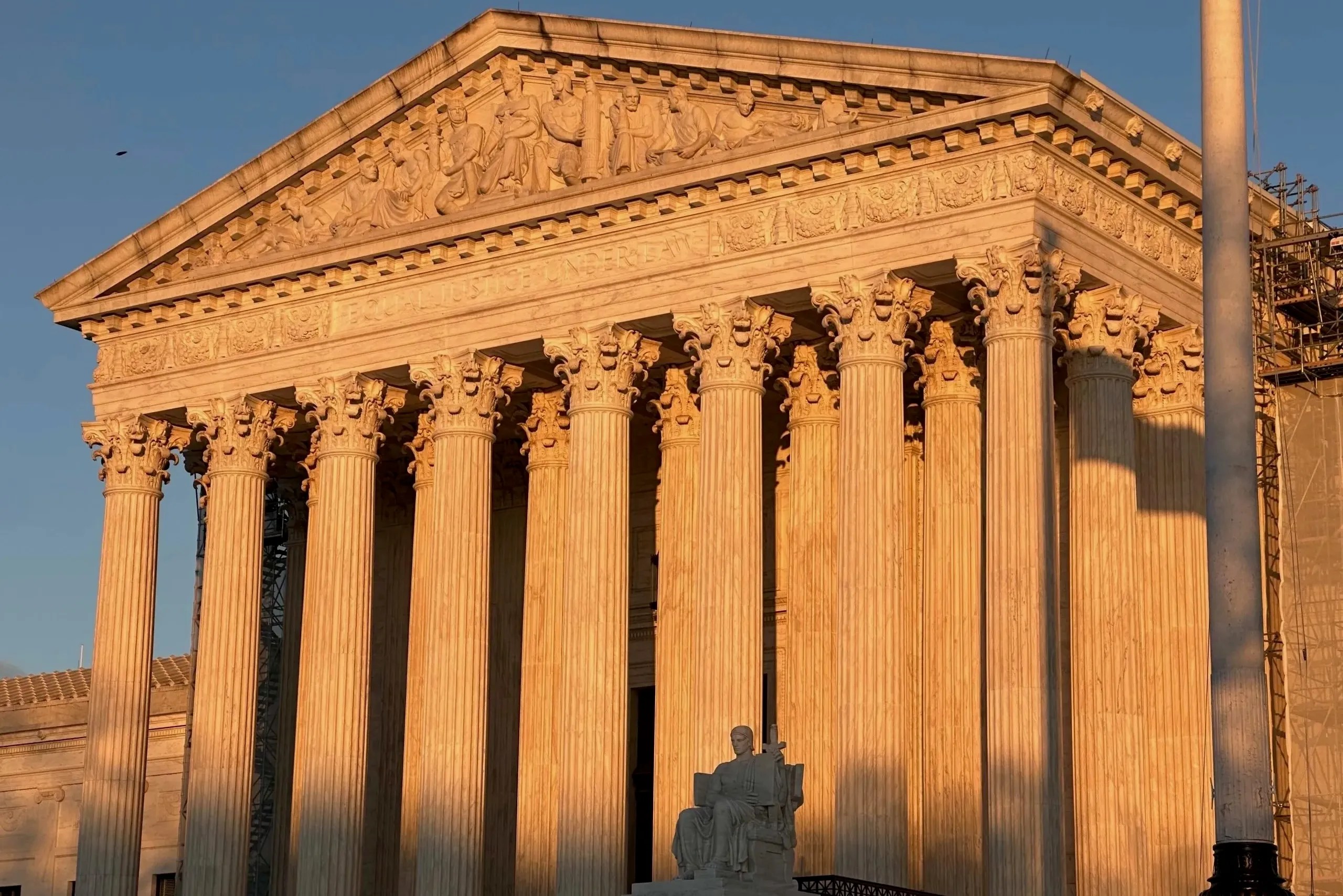Whose irreparable harm?


Cases and Controversies is a recurring series by Carolyn Shapiro, primarily focusing on the effects of the Supreme Court’s rulings, opinions, and procedures on the law, on other institutions, and on our constitutional democracy more generally.
Please note that the views of outside contributors do not reflect the official opinions of SCOTUSblog or its staff.
In Trump v. CASA, the Supreme Court announced that federal courts do not have the authority, under the Judiciary Act of 1789, to issue injunctions that prevent defendants from engaging in actions related to non-parties, even if those actions are illegal or unconstitutional. As others have pointed out, the practical consequences of the holding are unclear. The court described several mechanisms that might lead to comparably broad injunctive relief, including class actions, cases seeking to “set aside agency action” under the Administrative Procedure Act, and court orders that provide relief to third parties as an incidental but necessary part of providing “complete relief” to the plaintiffs. So litigation will continue along these fronts, including in the birthright citizenship cases themselves. (The lower courts all found that the executive order purporting to narrow birthright citizenship was likely unconstitutional, holdings that the Supreme Court did not address.)
But I have seen little written on the majority opinion’s discussion of what the government must show to obtain a stay of an injunction. Alarmingly, the CASA opinion seems to confirm what Justice Ketanji Brown Jackson has been warning: that the court is holding the government to a different, and much more lenient, standard from all other litigants (including past administrations) who seek a stay of an injunction or judgment, the applications of which are routinely denied by the court.
As the Supreme Court described in Nken v. Holder, courts should consider: “(1) whether the stay applicant has made a strong showing that [it] is likely to succeed on the merits; (2) whether the applicant will be irreparably injured absent a stay; (3) whether issuance of a stay will substantially injure the other parties interested in the proceeding; and (4) where the public interest lies.” These factors parallel what plaintiffs must show for an injunction to be issued in the first place, including that they will suffer irreparable harm – harm that cannot be remedied by money damages after the fact. The injunction is supposed to preclude that harm while the merits of the case are litigated. And the trial court, just like the Supreme Court, must consider the interests of the opposing party and the public interest more broadly. In all of the cases in which the government is seeking emergency stays, the lower courts have found that these factors favor the plaintiffs.
In the CASA majority opinion, the court provided more explanation than it has in any other case in which it has granted stays sought by the government. Yet Justice Amy Coney Barrett limited consideration of the first prong – the government’s likelihood of success on the merits – to whether it was likely to succeed in showing that universal injunctions are improper. The court simply did not discuss the underlying issue – whether the president can unilaterally announce a new and restricted understanding of birthright citizenship. The court also concluded that because it was remanding for the lower courts to determine the appropriate scope of the injunctions for the plaintiffs to obtain complete relief, the plaintiffs, by definition, would not be harmed by the stay it was issuing. That was the extent of its discussion of the third factor. (The third factor is sometimes called the “balance of equities,” and it can also incorporate factors like the parties’ conduct in the litigation.) Nor did the court expressly consider “where the public interest lies.”
Most notably, however, Barrett disposed of the government’s burden to show irreparable harm in just a couple of sentences: “When a federal court enters a universal injunction against the Government, it ‘improper[ly] intrudes’ on ‘a coordinate branch of the Government’ and prevents the Government from enforcing its policies against nonparties … That is enough to justify interim relief.”
This logic suggests (although does not say explicitly) that any injunction against the government imposes irreparable harm if it “prevents the Government from enforcing its policies.” Or as Justice Sonia Sotomayor put it, “that the President is harmed, irreparably, whenever he cannot do something he wants to do…”
I am aware of no precedent, however, that supports a conclusion that an injunction that might be overbroad or improper in some way necessarily imposes irreparable harm on the government, which would essentially collapse the irreparable harm inquiry into likelihood of success on the merits. Certainly that is not what the precedent quoted in CASA stands for. The primary case on which the CASA majority relied here is a 1993 in-chambers opinion by Justice Sandra Day O’Connor with the unwieldy name of INS v. Legalization Assistance Project of Los Angeles County Federation of Labor. In that case, O’Connor granted a stay of an injunction imposing limitations and requirements on the government’s implementation of the Immigration Reform and Control Act of 1986. O’Connor determined that the government would likely succeed in showing that the plaintiffs did not have a legal right to sue, known as standing, thus meeting the first Nken prong of likelihood of success on the merits.
But that conclusion alone was not the only reason O’Connor found irreparable harm. She also expressly discussed the “considerable administrative burden” the injunction would impose. As she described it, the injunction “requir[ed] the INS to … identify and adjudicate legalization applications filed by certain classes of immigrants, and temporarily grant certain classes of immigrants stays of deportation and employment authorization.” In contrast, the injunctions in the birthright citizenship cases required the government to do … nothing.
The Supreme Court has never before cited INS in a majority opinion, much less relied on it for such a sweeping position. Before CASA, individual justices had cited INS only four times – in two in-chambers opinions and in one concurrence to and one dissent from the granting of a stay. Every one of those opinions discussed some kind of harm beyond the restraint on a defendant, governmental or otherwise.
The same is true of the other cases on which the CASA majority relied. In Maryland v. King, for example, the Maryland high court overturned a rape conviction and held that routinely collecting DNA from those charged with violent crimes violated the Fourth Amendment. Chief Justice John Roberts, in chambers, granted a stay of that judgment. As the CASA majority noted, the chief justice said that “any time a State is enjoined by a court from effectuating statutes enacted by representatives of its people, it suffers a form of irreparable injury” – but he also discussed specific, “ongoing and concrete harm to Maryland’s law enforcement and public safety interests.” Likewise, in Coleman v. Paccar Inc., Chief Justice William Rehnquist considered the specific harms arising from the delay in implementing a new automobile safety regulation.
The CASA majority’s reliance on Trump v. International Refugee Assistance Project was particularly misplaced. In that case, the first Trump administration asked the court to stay two injunctions of its travel ban on people from several Muslim countries. The court granted partial stays, noting that the government pointed to specific harms, including being unable “to prevent potentially dangerous individuals from entering the United States” and an increased administrative burden on the government if it had to evaluate whether information provided by other countries was adequate without the ban in place.
IRAP also shows just how far the court has moved from the other Nken factors, especially the balance of equities and the public interest. In IRAP, the court narrowed the injunctions so that the travel ban would apply only “to foreign nationals who lack any bona fide relationship with a person or entity in the United States.” In so doing, it expressly balanced the government’s asserted interests with those of the plaintiffs and others like them, and it allowed the injunctions to protect all individuals with the requisite relationships.
So it is puzzling that CASA never addressed the public interest or balance of equities, even as it cited the very page of IRAP that explains that “[c]rafting a preliminary injunction is an exercise of discretion and judgment, often dependent as much on the equities of a given case as the substance of the legal issues it presents.” Unlike the Court in IRAP, the CASA majority did not, for example, consider the harms to third parties, like infants who could become stateless and deportable at birth. And because the court refused to engage with the underlying merits of the executive order, it could not meaningfully consider the balance of equities.
One can defend the majority opinion in CASA for not discussing the balance of equities and public interest on the ground that the court remanded for the lower courts to take account of such considerations in crafting new injunctions. But that defense does not apply to CASA’s handling of irreparable harm. In CASA, the court appears to be relying on a new standard for emergency relief for the government, which it also seems to have applied in many of its recent (and largely unexplained) orders on the shadow docket – including, just this week, Trump v. AFGE.
As Jackson warned, the court in CASA and in other shadow docket cases is “send[ing the] troubling message … that although other stay applicants must point to more than the annoyance of compliance with lower court orders they don’t like, the Government can approach the courtroom bar with nothing more than that and obtain relief from this Court.” And it is doing so without actually owning up to it. If the traditional factors to obtain a stay do not apply to the Trump administration, the least the court could do would be to say so and tell us why.
Posted in Cases and Controversies, Recurring Columns